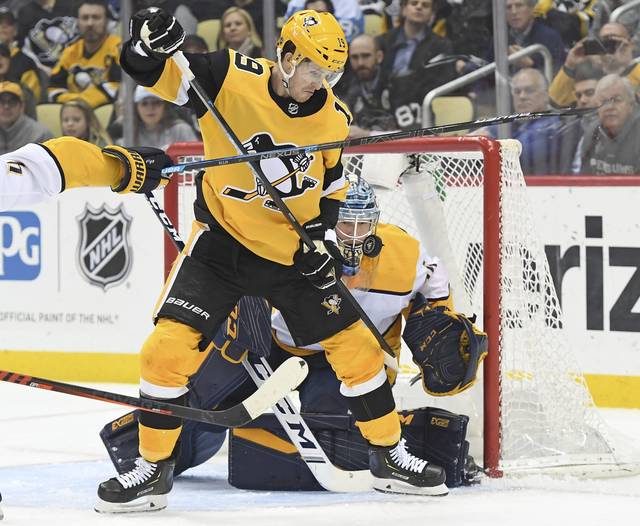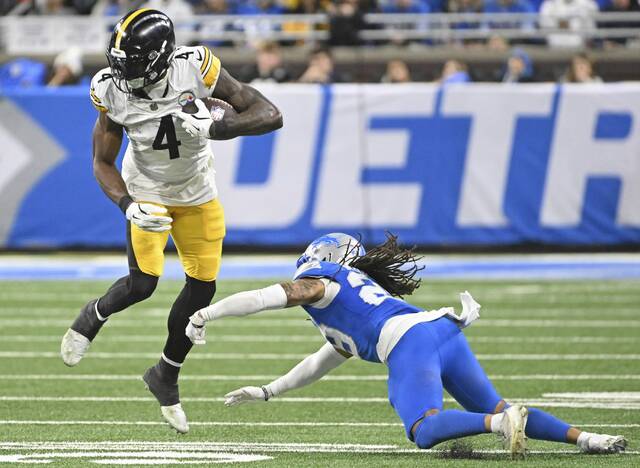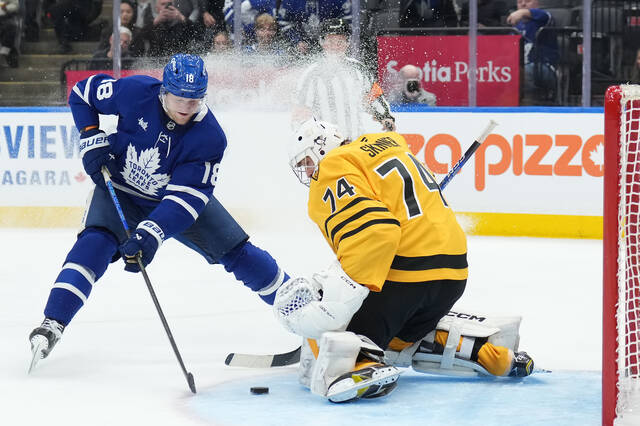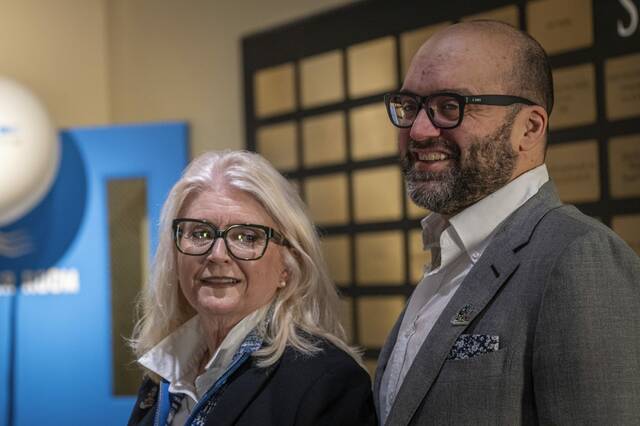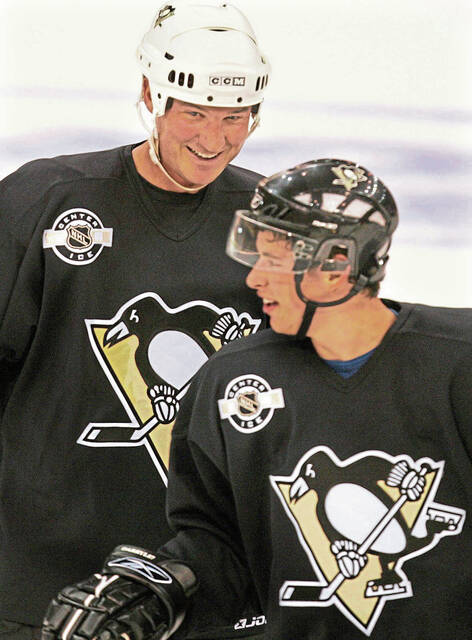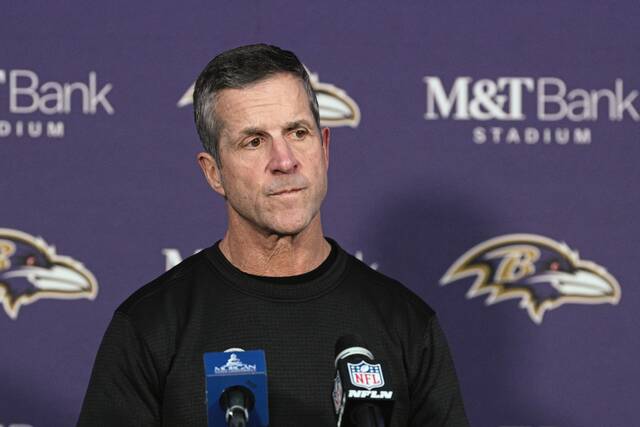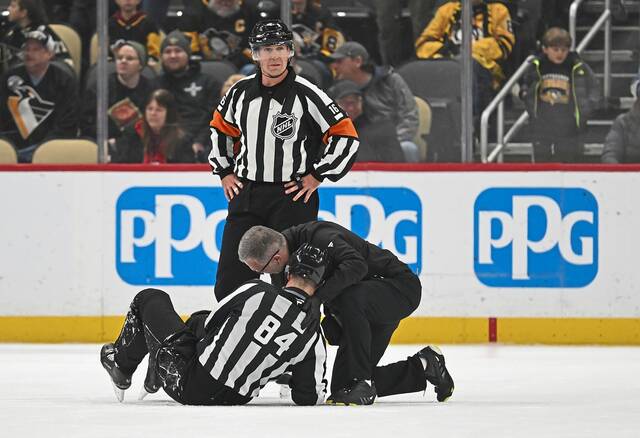Jared McCann is listed as a center.
He often plays left wing.
Which does he identify as?
“Neither,” said the fifth-year Pittsburgh Penguins forward.
That ambiguity over his position was on display Saturday during a 3-2 shootout loss to the Buffalo Sabres at PPG Paints Arena. After top center Sidney Crosby was injured early in the first period, McCann was promoted from the left wing of the third line to center on the first line.
It’s a shuffle McCann learned to embrace as a rookie with the Vancouver Canucks in 2015-16.
“I played a little bit (of wing) my first year in Vancouver,” said McCann, a first-round pick of the Canucks in 2014. “I was kind of swapped back and forth playing center. But I was mostly a centerman. I kind of figured that to be a good player in the league, you’ve got to be versatile and be a guy that can play in all situations. The more positions you know, the more versatile you can be.
McCann’s diverse skill set is a trait shared by most of the wings on the Penguins depth chart.
Zach Aston-Reese, Dominik Kahun, Dominik Simon, Bryan Rust and Brandon Tanev can play either wing.
Jake Guentzel and Alex Galchenyuk usually line up at left wing but can play center. Ditto for Nick Bjugstad at right wing. This preseason, Simon has even dabbled at center, a position he is listed at but rarely plays.
It’s not a practice that is new or exclusive to the Penguins. Under general manager Jim Rutherford, they’ve regularly employed forwards such as Eric Fehr, David Perron, Conor Sheary, Nick Spaling and Daniel Winnik who could play more than one position. But they’ve rarely had this many who could do it to start a season.
“I don’t know if it’s a point of emphasis, but it’s certainly a luxury when they can (play multiple positions),” coach Mike Sullivan said. “With some of the guys you’re alluding to, it just gives us that much more flexibility to move guys around. But I don’t know that it’s a ‘point of emphasis.’ We’re trying to find players that we think that can play the style of play that we’re trying to play and players that can complement the core group of players that we have.”
The Penguins’ main forwards tend to be limited to only one position. But they’re among the best in the world at those spots.
Crosby and fellow center Evgeni Malkin each have won the Hart Memorial Trophy as MVP. Patric Hornqvist is exclusively a right winger but might be the NHL’s best net-front player. In the past, Phil Kessel was limited to right wing in five-on-five play but was one of the league’s most dangerous scorers. Carl Hagelin was strictly a left winger but was one of the NHL’s premier forecheckers during his Penguins tenure.
So players can be one-position wingers with the Penguins. But they better be pretty good at it.
McCann, who played primarily on Crosby’s wing last season after being acquired in a February trade with the Florida Panthers, figured out how to work the left wing thanks to some instruction from future Hall of Fame forwards Henrik and Daniel Sedin in Vancouver.
“Wall battles. I feel like that was something we worked on a lot my first year,” he said. “They say 90 percent of the game is on the wall. I feel like if you’re strong on the wall, and a winger can get his head up and make plays, he can make life easier for his linemates.”
Aston-Reese, who is listed as a center but rarely plays there, learned to moved between wings during his senior season at Northeastern.
“I did play center in juniors,” Aston-Reese said. “But I just consider myself as a winger. I play right and left. I don’t feel more comfortable on either side. Just wherever.”
Bjugstad, expected to begin the season as the Penguins’ No. 3 center, feels playing wing is still a learning experience.
“Honestly, I probably wish I would have tried playing wing earlier in life just so I could learn it. I literally never played wing up until about three years ago. I guess learning the little tendencies of finding ways to create speed, that was the biggest thing for me.
“It’s pretty valuable to be able to play both. We have a lot of centers that can play wing and vice versa on this team. It’s a pretty versatile team in that dynamic. I don’t really have a preference, but wherever they want me is fine.”
For a franchise all too familiar with injuries, that versatility is invaluable when filling in gaps in the lineup.
“It’s a luxury for a coach to have to have the opportunity to move guys around the way we can,” Sullivan said. “We’ve got guys that can play the center and the wing. We have guys that can play the off wing and play their strong-side wing. So it just gives us that much more versatility throughout our lineup in how we’re going to cast these guys in certain roles.”
“We don’t have four (right-handed) wingers here, just the two (Hornqvist and Rust),” Aston-Reese said. “Someone’s going to be on their off side. I think most guys here are pretty capable of it.”


